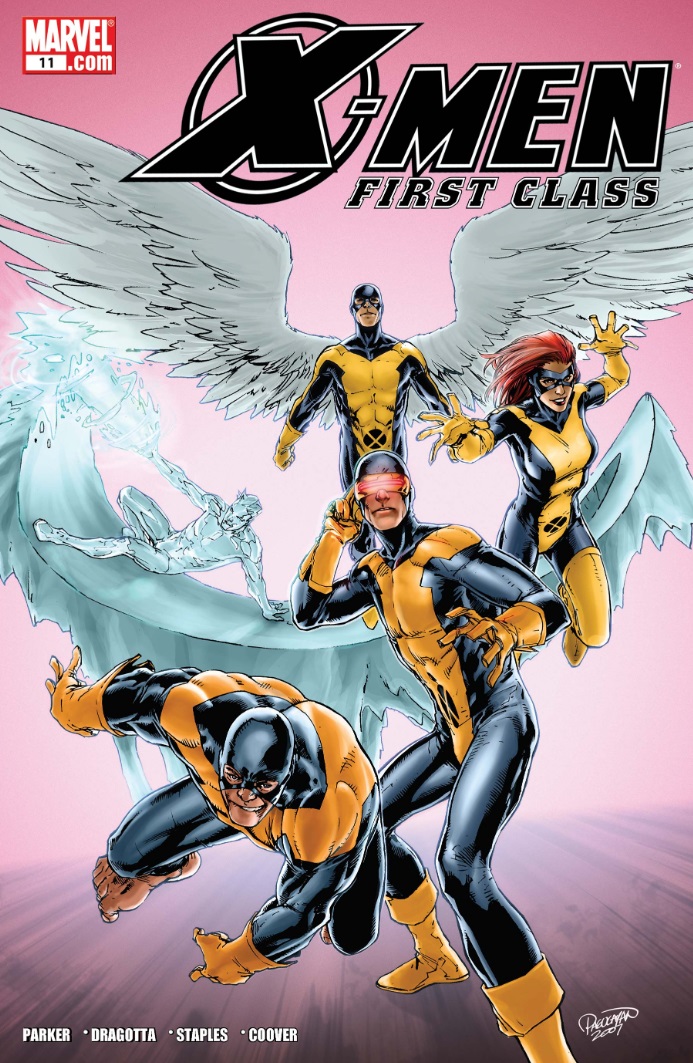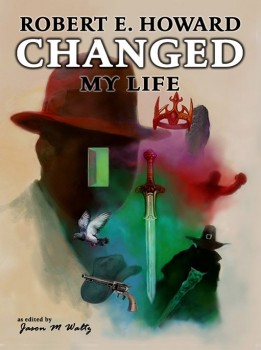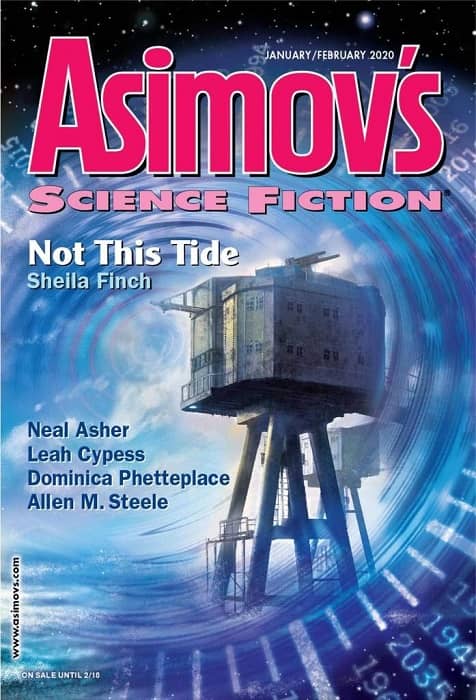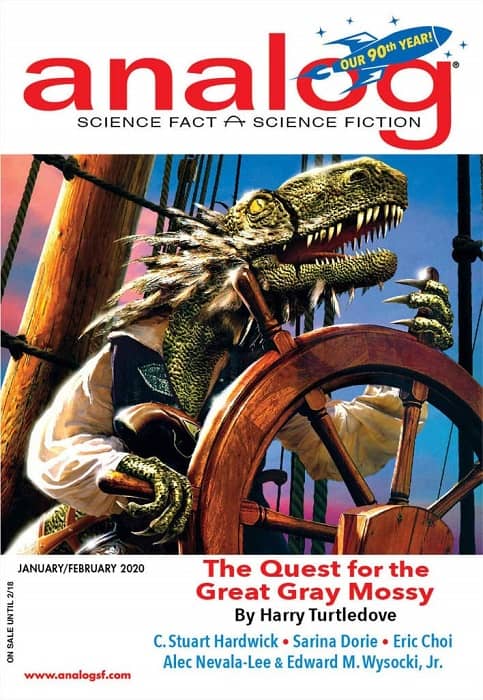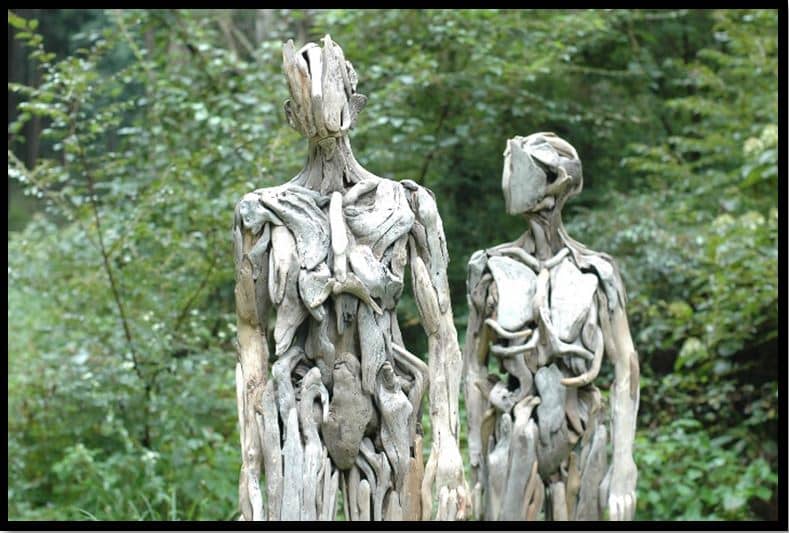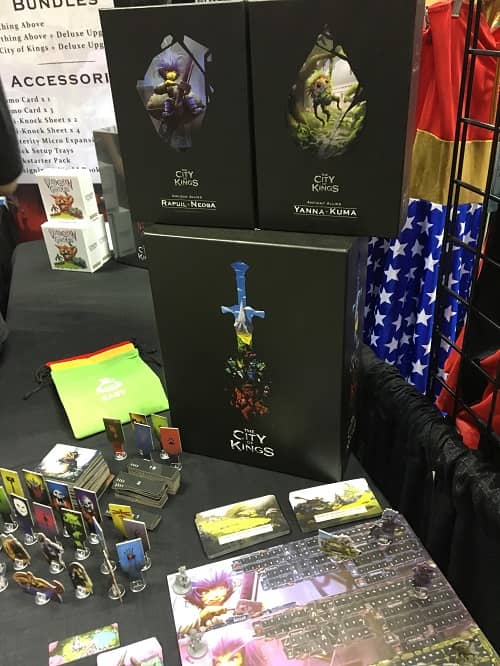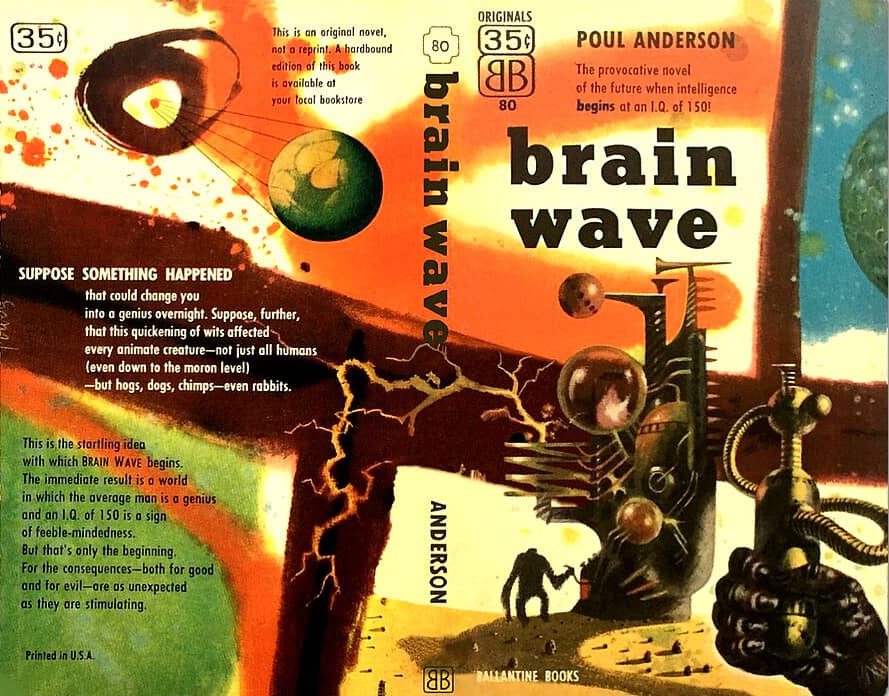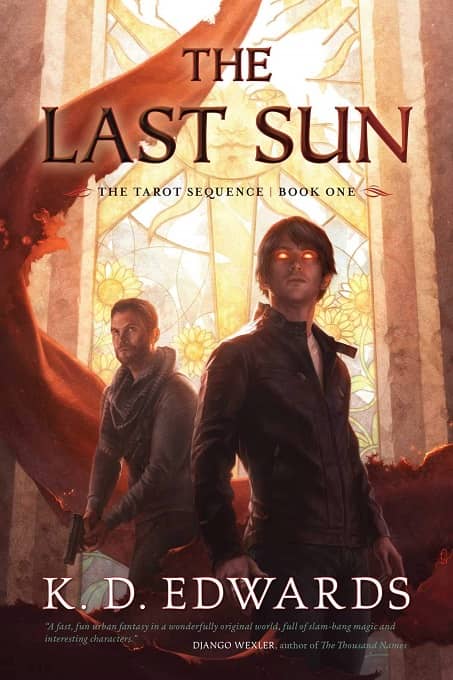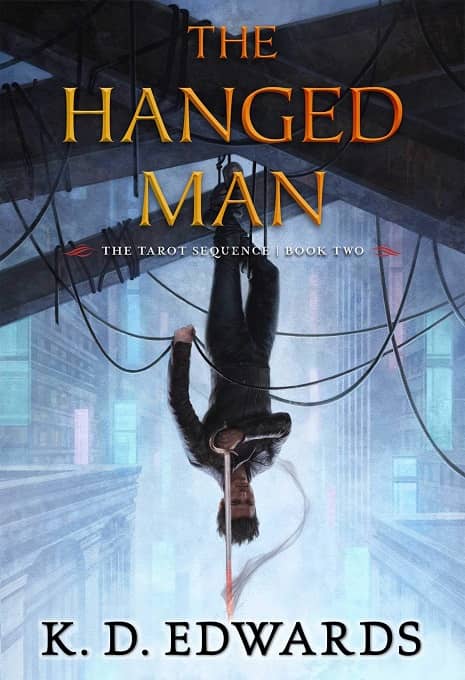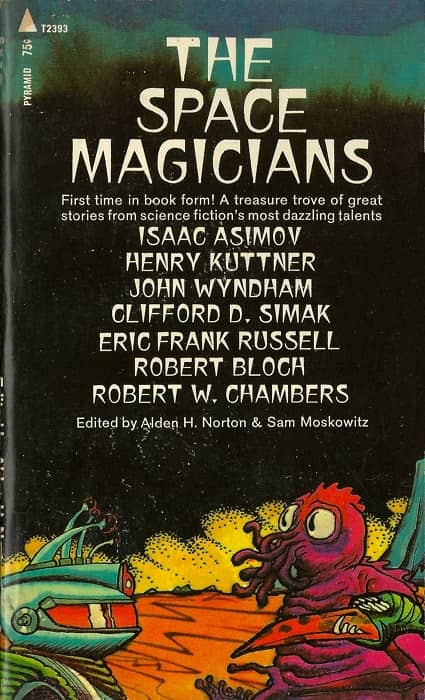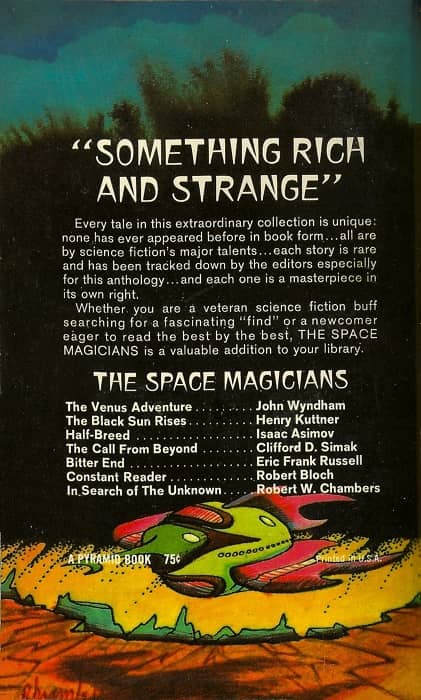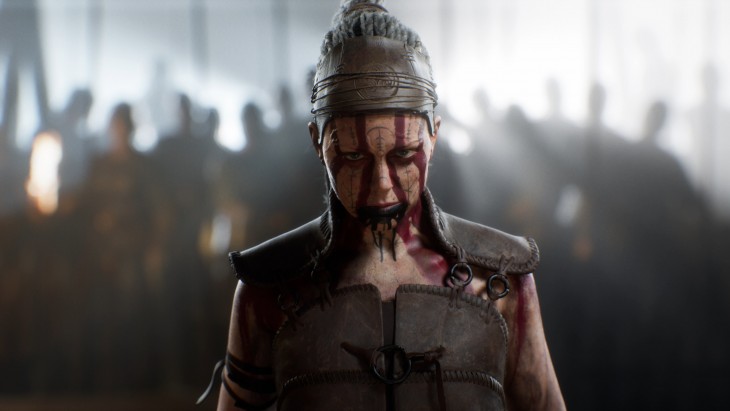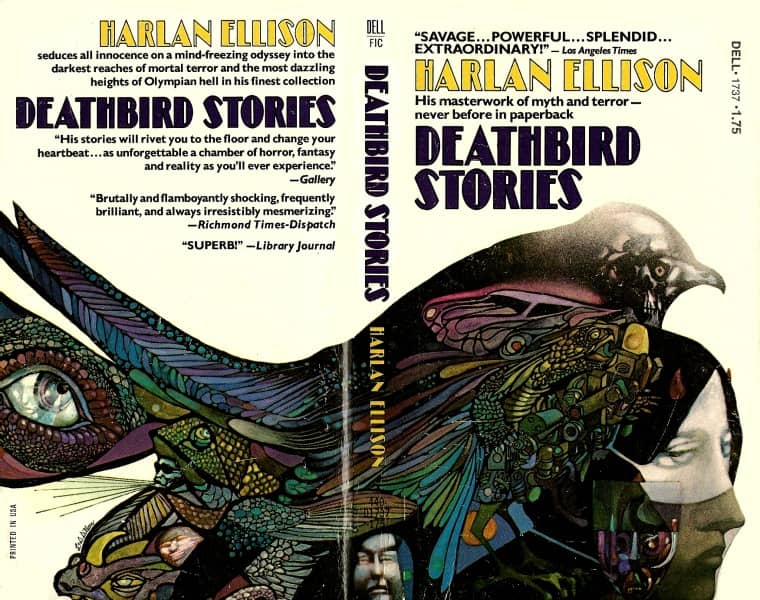
Deathbird Stories (Dell, 1976). Cover by Diane Dillon and Leo Dillon
In this time period the Locus Award for fiction went to novels, novellas, and short fiction, presumably both novelettes and short stories. (I’m not sure where the exact boundary between short fiction and novella was set.) Perhaps appropriately, the winner of the 1973 award, Harlan Ellison’s “Basilisk” is perhaps 7,000 words long, quite close to the current border between “short story” and “novelette” for both the Nebula and Hugo awards.
Harlan Ellison, who died in 2018, aged 84, was one of the most famous SF writers of my lifetime, and one of the most controversial. He also was one of the most celebrated, having won an astonishing 18 Locus awards, and been named SFWA Grand Master, as well as winning 8 Hugos and 2 Nebulas, and too many other awards for me to count.
Speaking personally, Ellison was one of those writers who, for the most part, I could admire without quite loving. A few of his stories were special to me – “On the Downhill Side” and “I Have No Mouth and I Must Scream” occur off the top of my head – stories as different from each other as one might imagine, but very effective. Much of the rest of his work struck me as impressive but overwrought, and often exchanging affect for effect, or choosing to impress instead of express. If you see what I mean. His technical skill, in the directions he chose, was astonishing, but the end results, at times, seemed a bit empty.
…
Read More Read More
